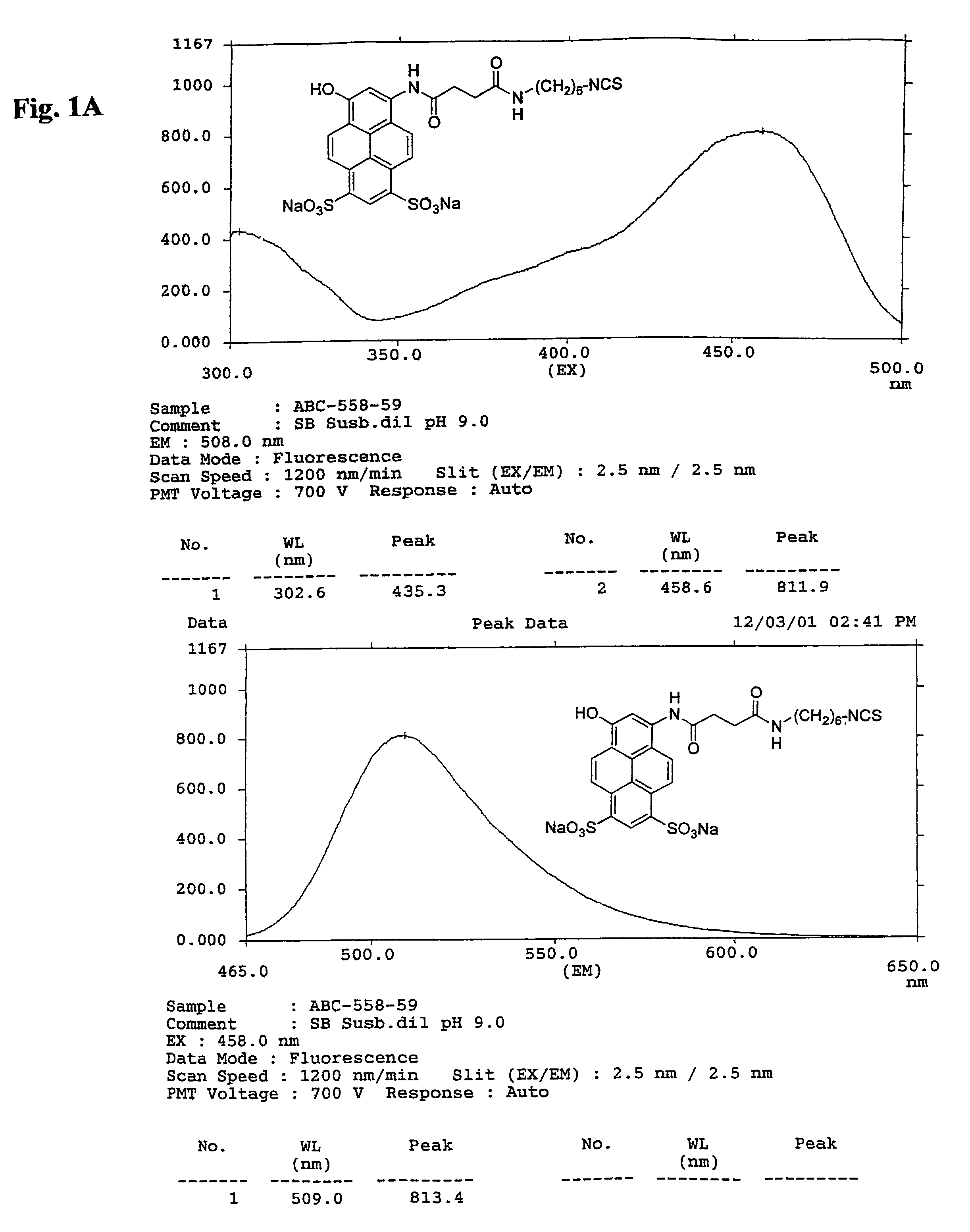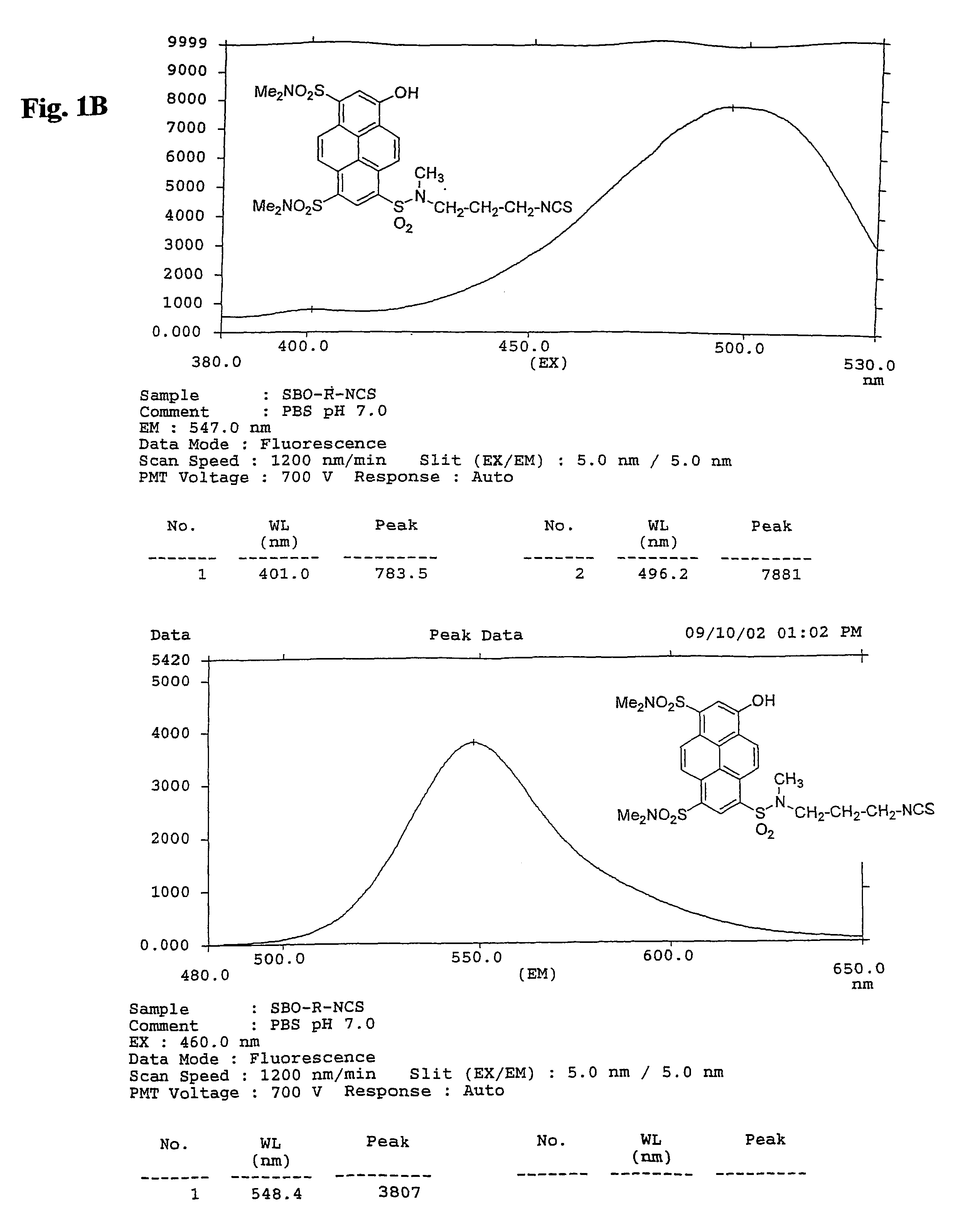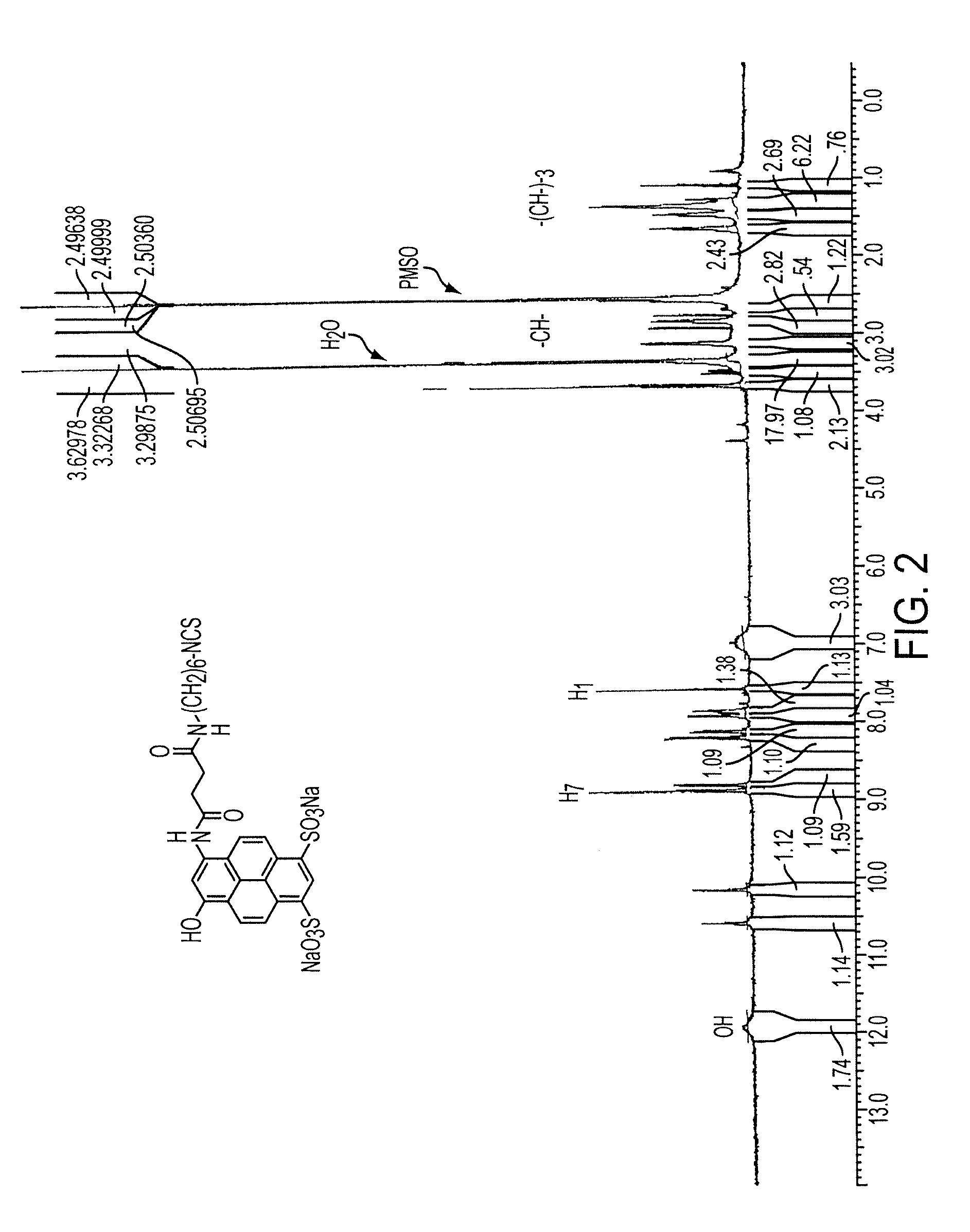Green and orange fluorescent labels and their uses
a fluorescent label and green and orange technology, applied in the field of green and orange fluorescent labels, can solve the problems of difficult to distinguish between, unsatisfactory compounds, and strong background fluorescence from biological samples,
- Summary
- Abstract
- Description
- Claims
- Application Information
AI Technical Summary
Benefits of technology
Problems solved by technology
Method used
Image
Examples
example 1
1-Amino-3,6,8-trisulfonyl-pyrene (Compound 2)
[0133]Amino-pyrene (434 mg, 2 mmol) was added in small portions to a solution of anhydrous sodium sulfate (1.13 g, 8 mMol) in concentrated sulfuric acid (5 ml). To this mixture was added fuming sulfuric acid (20%, 6 ml) dropwise. The resulting mixture was stirred at 60° C. overnight, then poured into ice and carefully neutralized with 50% sodium hydroxide to pH 7. The solution was concentrated in vacuo to dryness and the solid was extracted with methanol (100 ml) overnight. After evaporating methanol, the crude the product 2 was purified by reversed phase column chromatography to give 0.8 g (77%) of product as a yellow solid. 1H NMR (DMSO, 500 MHz): 6.38 (d, 2H), 7.94 (s, 1H), 8.23 (d, 1H), 8.67 (d, 1H), 8.88 (m, 3H); fluorescence (H2O): λ ex=450 nm, λ em=502 nm.
example 2
1-Amino-3-hydroxy-6,8-disulfonate-pyrene (Compound 3)
[0134]Sodium hydroxide (1.6 g, 40 mmol) and H2O (1.8 ml) were heated to 110° C., 2 (1 g, 1.91 mMol) was added to the melt in small portions under stirring. The temperature was raised to 190° C. in 30 min. The solid residue was cooled, acidified with concentrated hydrochloric acid, and the resulting precipitate was filtered off. The solid was extracted with methanol (50 ml). Evaporation of methanol gave 3 as a brown solid, 700 mg. 1H NMR (DMSO, 500 MHz): 6.32 (d, 2H), 6.89 (s, 1H), 8.05 (d, 1H), 8.10 (d, 1H), 8.53 (d, 1H), 8.58 (d, 1H), 8.88 (s, 1H); fluorescence (H2O): λ ex=450 nm, λ em=492 nm.
example 3
3-Hydroxy-6,8-disulfonate-methylsuccinylamino-pyrene (Compound 4)
[0135]To a solution of 3 (480 mg, 1.09 mmol) in a mixture of dioxane (15 ml) and H2O (15 ml) was added methyl 4-chloro-4-oxobutyrate (828 mg, 5.50 mMol) at 0° C. The mixture was stirred at 0° C. for 1 h then room temperature overnight. The resulting mixture was extracting with diethyl ether and the aqueous layer was neutralized with sodium bicarbonate to pH 7 and concentrated in vacuo. Purification by reversed phase chromatography afforded the desired product 4 as a yellow solid (150 mg, 25%). 1H NMR (DMSO, 500 MHz): 2.72 (t, 2H), 2.88 (t, 2H), 3.65 (s, 3H), 7.96 (d, 1H), 8.20 (d, 1H), 8.30 (d, 1H), 8.89 (d, 1H), 8.95 (d, 1H), 8.97 (s, 1H); fluorescence (H2O): λ ex=450 nm, λ em=492 nm.
PUM
| Property | Measurement | Unit |
|---|---|---|
| molecular weights | aaaaa | aaaaa |
| emission wavelength | aaaaa | aaaaa |
| pH | aaaaa | aaaaa |
Abstract
Description
Claims
Application Information
 Login to View More
Login to View More - R&D
- Intellectual Property
- Life Sciences
- Materials
- Tech Scout
- Unparalleled Data Quality
- Higher Quality Content
- 60% Fewer Hallucinations
Browse by: Latest US Patents, China's latest patents, Technical Efficacy Thesaurus, Application Domain, Technology Topic, Popular Technical Reports.
© 2025 PatSnap. All rights reserved.Legal|Privacy policy|Modern Slavery Act Transparency Statement|Sitemap|About US| Contact US: help@patsnap.com



